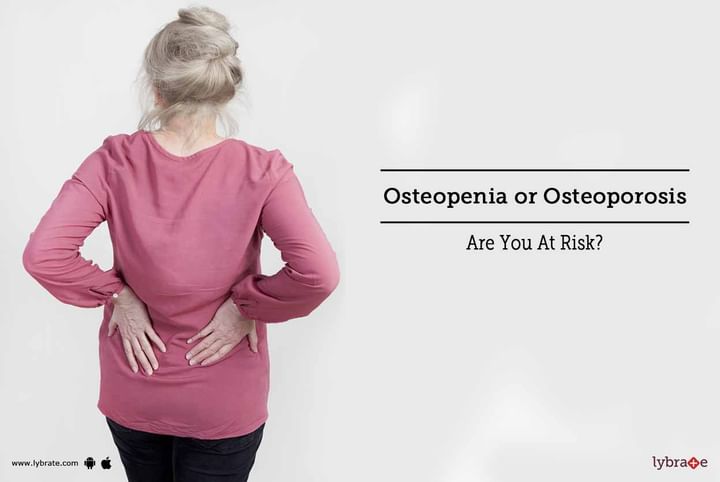Osteopenia or Osteoporosis - Are You At Risk?
Osteopenia is a medical condition that gradually causes thinning of bone mass. While the thinning mass is not considered as severe, the real danger looms when osteopenia aggravates to osteoporosis, resulting in a bone fracture. Osteopenia is mostly witnessed in people above the age of 50. The difference between the diagnosis of osteopenia and osteoporosis lies in the measure of bone density.
Osteoporosis, on the other hand, is the loss of bone mass due to the deficiency of calcium, magnesium, vitamin D and other minerals and vitamins. Osteoporosis can lead to broken bones, height loss, acute pain and humpback. It is estimated that over 54 million people in the US suffer from osteoporosis.
Bone mineral density (BMD):
The calcium deposit in the bone is measured by the bone mineral density (BMD) test. This test rightly estimates the chances of bone fracture in a person. Furthermore, it helps a doctor to distinguish between osteopenia and osteoporosis. Being non-invasive in nature, this test can be performed anytime on areas such as hip, shin bone, spine etc. BMD can either be measured by plain radiographs or DEXA. The latter is a form of X-ray that has lesser exposure to radiation. Post the test, a score is given based on the calcium availability of the bones.
How is a BMD comprehended?
Every BMD result is evaluated in the form of T-score. The T-score is derived by comparing the result of the BMD with a normal person in the 30’s having the same race and sex. The difference of score between a healthy individual and a patient affected with osteoporosis or osteopenia is referred to as Standard Deviation. A patient with a T-score in the range of (-1SD) to (-2.5SD) is considered a prime candidate for osteopenia. A patient having a T-score lesser than -2.5SD is diagnosed with osteoporosis.
Risk factor for osteopenia or osteoporosis:
While not everyone runs the risk of getting either osteopenia or osteoporosis, there are certain risk factors attached to it:
- Gender: Women run a higher risk of getting affected with osteopenia or osteoporosis.
- Race: Women who belong from the Caucasian or Asian origin run a higher risk of getting these diseases.
- Age: Most people tend to get these diseases above the age of 50. Humans have a tendency of losing close to 0.5 percent of bone every year after a certain age.
- Family history: A person with a family history of osteopenia or osteoporosis has more than 50% chance of getting either osteopenia or osteoporosis.
- Lifestyle: Poor diet, excessive smoking, alcohol, lack of exercising etc. goes a long way in contributing towards these diseases. If you wish to discuss about any specific problem, you can consult a rheumatologist.



+1.svg)
